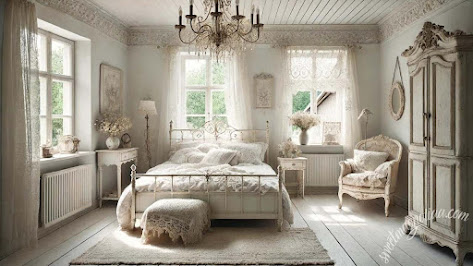Shabby Chic Interior Design: A Celebration of Vintage Charm and Elegance
Shabby chic
interior design is a style that combines comfort, vintage elegance, and a sense
of nostalgia. Emerging in the late 20th century, this design approach has
become a beloved way of decorating, especially in spaces that evoke warmth,
romance, and a lived-in feel. Shabby chic interiors embrace the beauty of worn
furniture, soft pastel colors, and antique elements, creating an atmosphere of
timeless charm. The style draws inspiration from French country homes, English
cottages, and the vintage aesthetics of the 18th and 19th centuries. This essay
explores the key elements of shabby chic design, its origins, and its impact on
modern interior design.
The Origins of Shabby Chic Design
Shabby chic
as a design style was coined by Rachel Ashwell, a British-born designer, in the
late 1980s. Ashwell opened her first store in Santa Monica, California, in
1989, offering furniture and decor items that were distressed or had an antique
look. The term "shabby chic" was used to describe the aesthetic of
beautifully worn furniture that had character and history, rather than being
new and pristine. The appeal of shabby chic was its ability to blend rustic
charm with elegance, combining pieces that appeared well-loved with luxurious
touches.
Defining Characteristics of Shabby Chic Interior Design
A hallmark
of shabby chic design is its soft, pastel color palette. Light shades of pink,
lavender, pale blue, mint green, and buttery yellow dominate shabby chic
interiors. These soft hues are paired with neutral tones like cream, white, and
beige to create a calm, welcoming environment. The use of muted colors creates
a sense of serenity and warmth, evoking the feeling of a sun-faded, vintage
home that has withstood the test of time.
Conclusion
Shabby chic
interior design is a beautiful blend of vintage charm, comfort, and romantic
elegance. With its focus on distressed furniture, soft colors, floral patterns,
and vintage accents, shabby chic creates spaces that feel timeless, inviting,
and full of character. Its origins in preserving and reusing antique items have
made it a style that values sustainability and the beauty of imperfection. As a
design philosophy, shabby chic emphasizes warmth, comfort, and personal
expression, making it an enduring favorite in the world of interior design.
Whether in a country cottage or a modern apartment, shabby chic offers a way to
create a home that feels both timeless and unique.
"This Content Sponsored by Buymote Shopping app
BuyMote E-Shopping Application is One of the Online Shopping App
Now Available on Play Store & App Store (Buymote E-Shopping)
Click Below Link and Install Application: https://buymote.shop/links/0f5993744a9213079a6b53e8
Sponsor Content: #buymote #buymoteeshopping #buymoteonline #buymoteshopping #buymoteapplication"







.jpg)